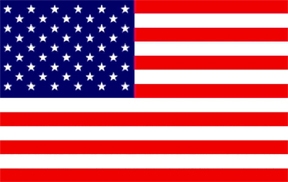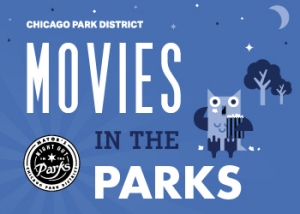
I have an important question for all legal experts; when does a person come of age where they have all the rights of freedom of speech? Is it 18 years old? Is it before 18 years old? I am afraid to say that it is not before the age of 18. Why do I say this? Because the U.S. Supreme Court, in the case of Dariano vs. the Morgan Hills School District, ruled against four students who wore the symbol of the American flag on their clothes to a Cinco de Mayo event at their school. The vice-principal of the school, fearful of gang violence, told the students to turn their shirts in or leave the school premises. Needless to say, it became a major legal fight between the students and their parents on the one hand and the school officials on the other. Strangely enough, every federal court has ruled against the students, including the California Supreme Court which said that the wearing of the U.S. flag in a public American school (funded by American taxpayers) could incite a riot against the school authority and therefore the school officials had a “right” to prevent any disruption of school activities and possible property damage to school grounds.
The U.S. Supreme Court let this decision by the California Supreme Court stand. So let me get this straight—-because of the possible threat of gang violence, both the California and U.S. Supreme courts ruled in favor of suppression of ordinary students showing their pride for the American flag?! Does anyone else see an irony in this? The U.S. flag, a symbol of freedom, bravery and courage, is a symbol that people are allowed to burn, are allowed to stamp their feet on, or disgrace in just any other way because it is, by the U.S. Supreme Court’s earlier decision, “freedom of speech.” However, when showing reverence for this glorious flag, it is not allowed (at least in high school). Apparently it has not occurred to any of the court justices, either in California or in Washington, D.C., that millions of Americans (and this includes Mexican Americans) have fought for this flag for decades and that many have paid the ultimate price for this. Are their memories to be forgotten now? Are the perceived acts of gangbangers more terrible than to suppress the rights of students?
In deciding this case, what the U.S. Supreme Court has used is an earlier precedent called the Tinker vs. Des Moines School District case. In the Tinker case, the U.S. Supreme affirmed the rights of high school students, but left in a clause within that ruling that said that all students had freedom of speech except if they use “inflammatory symbols that can disrupt the activities of the school.” This part was never fully clarified. When I thought about it, I thought it referred to things such as extreme hate speech like the flags or symbols of the Ku Klux Klan or the neo-nazis. But the flag of the United States? Even the Tinkers, who were at the heart of the court case for student freedom of speech, have been horrified at this new interpretation by both the California and U.S. Supreme courts. They contend that disruption of school activities does NOT include the American flag, or people showing their pride in in. All I can say is that the California and U.S. Supreme courts justices are buffoons who do not live in the real world and have no clue about the country they are living in. It is too bad at times they cannot be impeached or voted out of office.
As for the Morgan Hills School District, they should take care of their gangbanger problem. If the gangbangers can threaten violence every time some one or some group tries to exercise their rights to free speech, then no one has any rights and no one is safe at the school. And as I mentioned before, these school officials should have done better in educating ALL students about what the U.S. flag means and the proud history of this glorious symbol.

 Mayor Brandon Johnson Vetoes ‘Snap Curfew’ Ordinance June 26, 2025
Mayor Brandon Johnson Vetoes ‘Snap Curfew’ Ordinance June 26, 2025

 Esemble Español Searching for New Artistic Director June 26, 2025
Esemble Español Searching for New Artistic Director June 26, 2025







No High School Free Speech
I have an important question for all legal experts; when does a person come of age where they have all the rights of freedom of speech? Is it 18 years old? Is it before 18 years old? I am afraid to say that it is not before the age of 18. Why do I say this? Because the U.S. Supreme Court, in the case of Dariano vs. the Morgan Hills School District, ruled against four students who wore the symbol of the American flag on their clothes to a Cinco de Mayo event at their school. The vice-principal of the school, fearful of gang violence, told the students to turn their shirts in or leave the school premises. Needless to say, it became a major legal fight between the students and their parents on the one hand and the school officials on the other. Strangely enough, every federal court has ruled against the students, including the California Supreme Court which said that the wearing of the U.S. flag in a public American school (funded by American taxpayers) could incite a riot against the school authority and therefore the school officials had a “right” to prevent any disruption of school activities and possible property damage to school grounds.
The U.S. Supreme Court let this decision by the California Supreme Court stand. So let me get this straight—-because of the possible threat of gang violence, both the California and U.S. Supreme courts ruled in favor of suppression of ordinary students showing their pride for the American flag?! Does anyone else see an irony in this? The U.S. flag, a symbol of freedom, bravery and courage, is a symbol that people are allowed to burn, are allowed to stamp their feet on, or disgrace in just any other way because it is, by the U.S. Supreme Court’s earlier decision, “freedom of speech.” However, when showing reverence for this glorious flag, it is not allowed (at least in high school). Apparently it has not occurred to any of the court justices, either in California or in Washington, D.C., that millions of Americans (and this includes Mexican Americans) have fought for this flag for decades and that many have paid the ultimate price for this. Are their memories to be forgotten now? Are the perceived acts of gangbangers more terrible than to suppress the rights of students?
In deciding this case, what the U.S. Supreme Court has used is an earlier precedent called the Tinker vs. Des Moines School District case. In the Tinker case, the U.S. Supreme affirmed the rights of high school students, but left in a clause within that ruling that said that all students had freedom of speech except if they use “inflammatory symbols that can disrupt the activities of the school.” This part was never fully clarified. When I thought about it, I thought it referred to things such as extreme hate speech like the flags or symbols of the Ku Klux Klan or the neo-nazis. But the flag of the United States? Even the Tinkers, who were at the heart of the court case for student freedom of speech, have been horrified at this new interpretation by both the California and U.S. Supreme courts. They contend that disruption of school activities does NOT include the American flag, or people showing their pride in in. All I can say is that the California and U.S. Supreme courts justices are buffoons who do not live in the real world and have no clue about the country they are living in. It is too bad at times they cannot be impeached or voted out of office.
As for the Morgan Hills School District, they should take care of their gangbanger problem. If the gangbangers can threaten violence every time some one or some group tries to exercise their rights to free speech, then no one has any rights and no one is safe at the school. And as I mentioned before, these school officials should have done better in educating ALL students about what the U.S. flag means and the proud history of this glorious symbol.